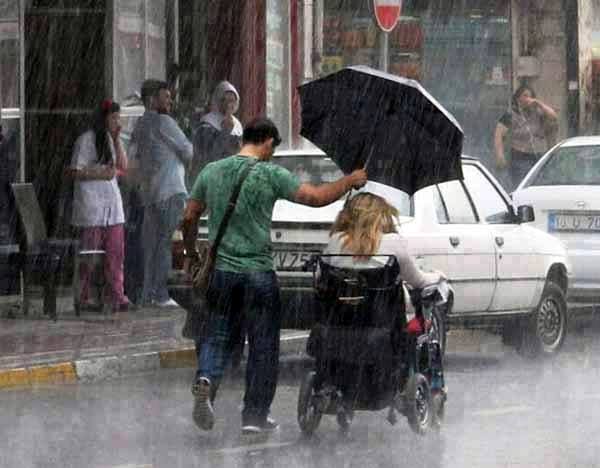Alfred Adler, Carl Jung and Sigmund Freud are founding fathers of modern psychology. Freud and Jung are still famous. Adler is less so but I like his approach to life. Late in his career, he wrote a couple of non-technical books for lay persons: Understanding Human Nature and What Life Could Mean To You. In one of these books, Adler remarked that his extensive knowledge of psychology could be summed up in his 'Fourteen Day Cure Plan'. He had devised a 'raam-baan' cure (something that works with 100% guarantee) to all psychological problems! All psychological problems? Isn't that an amazing statement, coming from a giant in psychology with extensive field work?
Adler's 14-Day Cure: What is Adler's approach? At the core of Adler's philosophy lies Gemeinschaftsgefuhl which means "social interest" or "communal feeling". An excerpt from the book Positive Discipline (384 pages, 2006) by Jane Nelsen showcases Adler's approach:
Alfred Adler is basically suggesting "seva" or "service to others". What Adler is pointing out is that when the "I" becomes strong, we run into major psychological problems.
A conversation with Archana Jajodia was along the same lines. She is one of my Computer Science classmates from IIT Delhi. She switched to Psychology and is presently an Assistant Clinical Professor at UC San Diego. A few years ago, I had asked her, "What have you learnt from thousands of hours of listening to people in distress?" Archana's second sentence was something like, "The people with the maximum problems are those who are the most selfish."
Thankfulness: The snippet from Jane Nelsen's book above is worth re-reading and analyzing in detail. Note the statement by the depressed woman: "Why should I do something for someone else, when no one ever does anything for me?" It gives us insight into the woman's thought process. She has become an island, disconnected from society. She feels that nobody does anything for her. She does not feel like doing anything for anybody else. An antidote for her is to start maintaining a thankfulness journal where she identifies and expresses gratitude for something unique every day. After some time, maybe a month or two, she is likely to realize that innumerable individuals are doing things for her. Then a feeling of indebtedness is likely to arise, motivating her to invest time in social service.

Many acts have immeasurable value. Furthermore, the value of two acts is often incomparable. So we can never be sure if we really paid back the individual who helped us. Sometimes, help is intangible. How much value would you ascribe to help that resulted in avoidance of some serious pitfall?
The best way to repay our debts is through thankfulness combined with the "pay it forward" policy. In other words, (a) be thankful to those who have served you, and (b) serve others whenever possible, not limited to those whom we identified as our benefactors.
Our ancestors discovered many things like agriculture, medicine, exercises, and so on. It is not possible for us to repay our ancestors for their gifts to us. The right approach is to "pay it forward" to future generations.
Further reading:
- Pay It Forward (Psychology Today, July 2006).
- Ideas for Random Acts of Kindness (Feb 2016).
The Five Love Languages: The Secret to Love that Lasts (2008 pages, 2009) by Gary Chapman says that partners in the Western world express love for each other through five different channels: (a) Words of affirmation (thankfulness): you are open and expressive in telling your partner how wonderful you think they are, how much you appreciate them, (b) Acts of service: you offer to watch the kids while your partner goes to the gym, (c) Affection: warm hugs, kisses, touch, (d) Quality time: this is about being together, fully present and engaged in activities, (e) Gifts: you love to give gifts to your partner. Gary Chapman believes that we all have one or two predominant channels of expressing love. Most of us expect the same type of love in return. Problems between partners arise when they do not appreciate that there are five different ways of expressing love and that different people express love differently.
I once browsed through Mars and Venus in the Bedroom (226 pages, 2009) by John Gray. John has written a series of 'Mars & Venus' books to highlight the differences between men and women and how the two sexes can get along in romantic settings despite their differences.
In the book 'Mars and Venus In The Bedroom', John Gray offers several insights and techniques for love making. The basic idea behind each technique is to understand the needs of your partner and assiduously work towards meeting them. Love making is extraordinarily fulfilling if both partners approach it as an act of service to benefit the other person.
This Wikipedia article explains various kinds of love styles: Eros (erotic / passionate), Ludus (players), Storge (friendship or familial love), Mania (possessive, needy, obsessive), Agape (spiritual, selfless), Pragma (pragmatic, value-based). I like this Wikipedia article because it has references to popular stories and English movies that portray each type of love style. An excerpt from the article:
In 2012, I heard a talk by Daniel Amen, a somewhat controversial psychologist who wrote Change Your Brain, Change Your Life (480 pages, 2015). He explained that many people are familiar with techniques for improving their physical and mental health. They have even tried such techniques in the past and have seen benefits. Still, many people find it hard to have the discipline to sustain these techniques on a long term basis. Why? What could motivate them to keep applying these techniques until they become second nature? Daniel Amen's idea is to find 'The Picture' of a loved one to whom we dedicate our efforts.
Daniel Amen's idea will make more sense if we understand that we spread to others what we are inside. If we're angry, we spread anger. If we're afraid, we spread fear. If we're joyful, we spread joy to those we interact with. Keeping that in mind, what state would we like to be in the presence of our loved ones? Angry? Afraid? Joyful? Daniel Amen idea of 'The Picture' is to invoke the memory of our loved ones when we invest efforts to keep ourselves in good shape: physically and mentally. Thus the goal of our investment in our own well-being is an act of service: we would like to be in good physical health and positive state of mind in the presence of our loved ones.




